#hmong history
Explore tagged Tumblr posts
Text
So to help prevent people outside of Hmong culture from bastardizing our history or culture like they did to other Asian cultures, we gotta speak up.
So I'm just going to mention a few things related to U.S. history, since this is about only our contributions to the U.S.. I'm sure most Americans are familiar with WW2. Japanese imperialism at the time reached all the way to Laos, which was a French colony at the time. And France was part of the Allied Powers(Great Britain, France, the Soviet Union, the U.S., China). So most of the Hmong fought against the Japanese military.
Then in the 1960's the U.S. government decided to start the Secret War in Laos. It's called the Secret War because nobody really knows about it. It's not taught in schools. We were erased from American history. The U.S. used Hmong child soldiers to fight their secret war while making Laos the most bombed country in history. Bombs drop every 8 minutes for nearly a decade in Laos(x).
After the Laotion Civil War ended, the CIA abandoned the Hmong. The Secret War ended for the U.S., but not completely for the Hmong in Laos(x). Hmong people were persecuted by the new communist government. Most Hmong fled to Thailand while some fled to the jungle. Most Hmong Americans you see in the U.S. came here as refugees or are descended from refugees. At first the U.S. only let the most educated Hmong in, only a few thousand. Then most came in the 1980's. The last Hmong refugees were brought over in 2005. The last refugee camps in Thailand were closed so, technically, Hmong choosing to immigrate on their own wouldn't count as relocating refugees anymore(?) They're still very much the result of a war we didn't start.
main source
4 notes
·
View notes
Text

Hmong Leaders 2025
A Hmong Project by me Lochuneng
#hmong#hmoob#laos#1975#1960#general vang pao#hmong people#hmong leaders#leaders#asians#china#chinese dynasties#news#history#hmong history
1 note
·
View note
Text
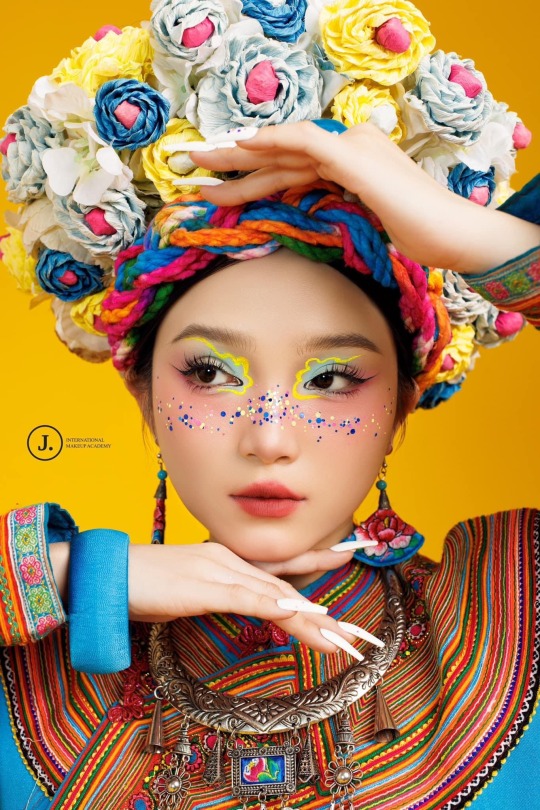
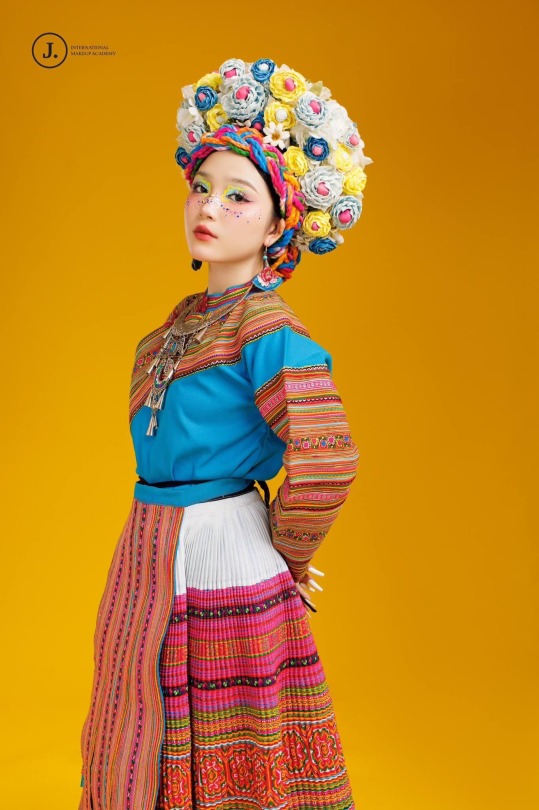
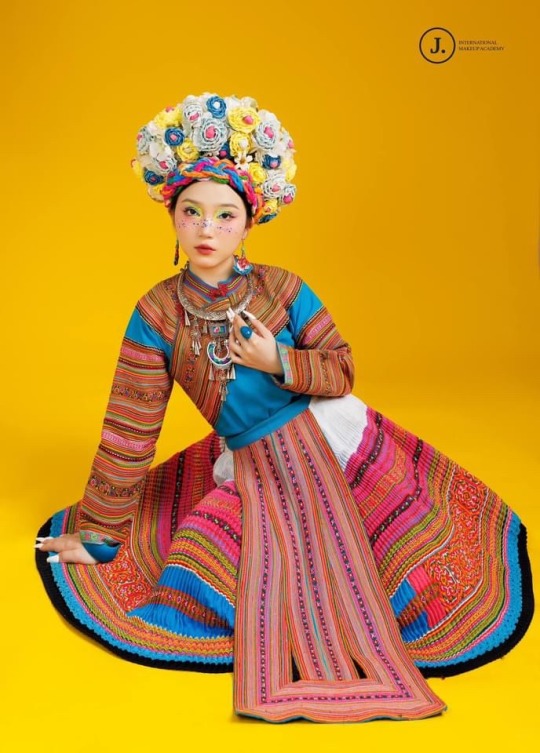
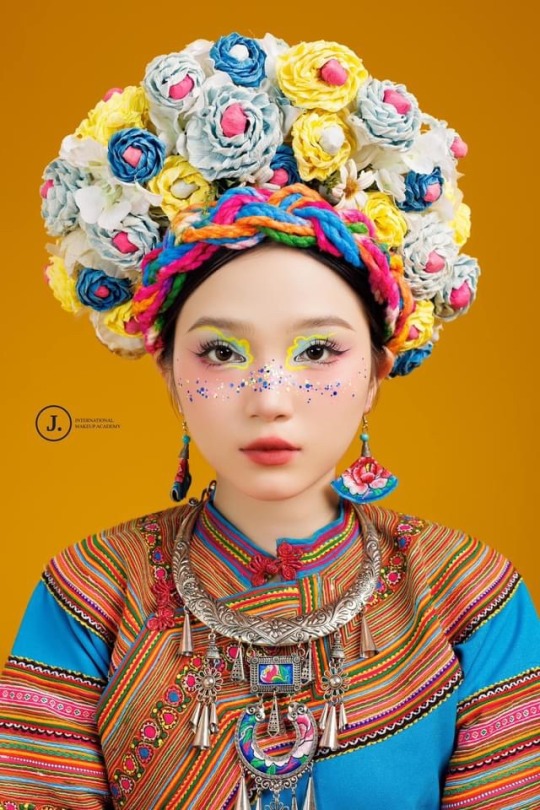
Hmong traditional fashion. Credit to Hnubflower.
#vietnam#vietnamese#culture#history#fashion#historical fashion#hmong#ethnic fashion#ethnic minorities#ethnic groups#ethnicity#ethnicwear#ethnicfashion#ethnicelegance#ethnicchic#ethnicdresses#makeup
623 notes
·
View notes
Text

On display on the third floor of the Library and Courts building, a tapestry depicting the history of the Hmong people as they fled from China in ca. 1200 up to their arrival in the 1980s at Los Angeles International Airport. The artist of this 1980 tapestry is unknown.
33 notes
·
View notes
Text
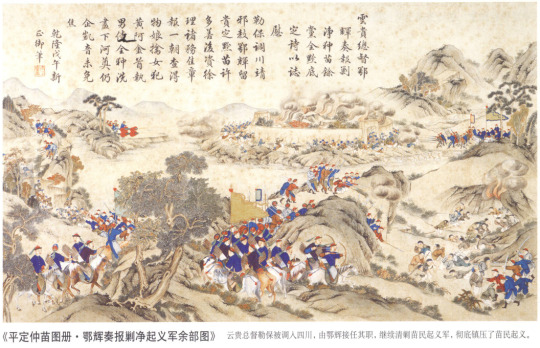
A Chinese court painting of a military operation against the Miao people (also known as the Hmong) in 1795. The Miao were oppressed by both the Ming and Qing Dynasties. The Ming apparently carried out mass-castration campaigns against them, and the Qing segregated them from Han Chinese people. The Miao fought several rebellions against China in the 1700s and 1800s.
{WHF} {Ko-Fi} {Medium}
73 notes
·
View notes
Text
Books of 2023

Book 22 of 2023
Title: The Ravens: The Men Who Flew in America's Secret War in Laos Authors: Christopher Robbins ISBN: 9780517566121 Tags: A-1 Skyraiders, AC-47 Spooky, Ambassador Leonard Unger, Antonov AN-2 Colt, Aviation, B-52 Stratofortress, C-130 Hercules, C-46 Commando, C-47 Skytrain, CH-34 Choctaw, CIA Allen Dulles, CIA Hugh Tovar, COD Democratic Republic of the Congo - Congo-Kinshasa, COD Kinshasa (Leopoldville), COD Lubumbashi (Elisabethville), COD MNC Congolese National Movement, COD Mobutu Sese Seko, COD Patrice Lumumba, COD Simba Rebellion (1963-1965), CSAR, EC-47 Electric Goon, F-105 Thunderchief, F-4 Phantom II, FAC, Fast-FAC, FRA ADT Colonel Roger Trinquier, FRA ADT French Ground Army (Armée de terre), FRA ADT General Henri Navarre, FRA ADT General Raoul Salan, FRA ADT Marshall Jean de Lattre de Tassigny, FRA France, FRA Madame Lulu, From LAPL, HH-3E Jolly Green Giant, HH-53 Super Jolly Green Giants, IRN Ayatollah Ruhollah Khomeini, IRN Iran, KHM Cambodia, KHM Cambodian Civil War (1967-1975), KHM Khmer Rouge, KHM King & President Norodom Sihanouk, KHM Phnom Penh, KHM Tonle Sap (Great Lake), LAO Attopeu, LAO Ban Ban, LAO Ban Ban Valley, LAO Ban Son, LAO Bataillon Guerrier 403 (Laotian Civil War), LAO Blind Bonze Pho Satheu, LAO Bolovens Plateau, LAO Colonel Deuan Sunnalath, LAO Communist Neutralists, LAO Defense Minister Sisouk Na Champassak, LAO Hmong Meo Tribesmen, LAO Hotel Lima, LAO ICC Internationl Control Commission, LAO Ice House One and Two, LAO Jungle's Mouth, LAO Khang Khay, LAO Khang Khay - Chinese Cultural Center, LAO King Savang Vatthana, LAO King Sisavang Vong, LAO Klick 11, LAO Lam Son 719 (1971) (Vietnam War), LAO Lan Xiang 9 - Raven Hooch, LAO Laos, LAO Laotian Civil War (1959-1975), LAO Les Rendezvous des Amis, LAO Lhat Houang, LAO Lima 35 - Paksane (Laotian Civil War), LAO Lima Site 103 - Phu Da Pho (Laotian Civil War), LAO Lima Site 108 - Moung Soui (Laotian Civil War), LAO Lima Site 113 - Moung Cha (Laotian Civil War), LAO Lima Site 15 - Ba Na (Laotian Civil War), LAO Lima Site 15 - Phong Saly (Laotian Civil War), LAO Lima Site 20 - Sam Thong (Laotian Civil War), LAO Lima Site 204 - Khang Kho (Laotian Civil War), LAO Lima Site 20A - Long Tieng (Laotian Civil War), LAO Lima Site 262 - Ban Xon / Ban Houei Pamone (Laotian Civil War), LAO Lima Site 276 - Lat Sen (Laotian Civil War), LAO Lima Site 32 - Boung Lam (Laotian Civil War), LAO Lima Site 36 - Na Khang (Laotian Civil War), LAO Lima Site 46 - Seno (Laotian Civil War), LAO Lima Site 85 - Phu Pha Thi (Laotian Civil War), LAO Long Tieng, LAO Luang Prabang, LAO Moung Soui, LAO MR Military Region (Laotian Civil War), LAO MR1 (Laotian Civil War), LAO MR2 (Laotian Civil War), LAO MR3 (Laotian Civil War), LAO MR4 (Laotian Civil War), LAO MR5 (Laotian Civil War), LAO Muong Mai, LAO Nong Het, LAO Operation About Face / Kou Kiet (1969) (Laotian Civil War), LAO Operation Barrel Roll (1964-1973) (Laotian Civil War) (Vietnam War), LAO Operation Bedrock (1971) (Laotian Civil War), LAO Operation Black Lion IV (1972) (Laotian Civil War), LAO Operation Blind Bat (1964-1970) (Laotian Civil War), LAO Operation Glass A (Laotian Civil War), LAO Operation Goodlook (1970) (Laotian Civil War), LAO Operation Leapfrog (1970) (Laotian Civil War), LAO Operation Nighty-Night (1969) (Laotian Civil War), LAO Operation Northwind (Laotian Civil War), LAO Operation Pig Fat (1968) (Laotian Civil War), LAO Operation Rain Dance (1969) (Laotian Civil War), LAO Operation Shining Brass / Prairie Fire / Phu Dong (1965-1975) (Laotian Civil War) (Vietnam War), LAO Operation Steel Tiger (1965-1968) (Laotian Civil War) (Vietnam War), LAO Operation Tiger Hound (1965-1968) (Laotian Civil War) (Vietnam War), LAO Operation Westwind (Laotian Civil War), LAO Operation White Star (1959-1961) (Laotian Civil War), LAO Operation X (1946-1954) (French Indochina War), LAO Operation Yankee Team (1964) (Laotian Civil War), LAO Padong, LAO Pakse, LAO Paksong, LAO Pathet Lao, LAO Phong Saly, LAO Phou Khean, LAO Phou Nok Kok (Black Lion), LAO Phou Tham, LAO Plain of Jars / Plaine des Jarres, LAO Prime Minister Phoui Sananikone, LAO Prime Minister Souvanna Phouma, LAO Prince Souvanna Phouma, LAO Project Waterpump (1964-1973) (Laotian Civil War), LAO Purple Porpoise, LAO RLA Captain Kong Le, LAO RLA General Oudone Sananikone, LAO RLA General Phoumi Nosavan, LAO RLA General Vang Pao, LAO RLA Royal Laotian Army, LAO RLA SGU Special Guerrilla Units, LAO RLAF CPK Chao Pha Khao Hmong Pilots/Backseaters (Laotian Civil War), LAO RLAF Lt Colonel Lee Lue, LAO RLAF Royal Lao Air Force, LAO Roadrunner Lake, LAO Route 13, LAO Route 19, LAO Route 23, LAO Route 4, LAO Route 6, LAO Route 7, LAO Route 7/71 Junction, LAO Route 71, LAO Sam Nuea, LAO Sam Thong, LAO Saravane, LAO Se Kong River, LAO Skyline Ridge, LAO St. Valentine's Day Massacre (Laotian Civil War), LAO Tchepone, LAO US Programs Evaluation Office (Laotian Civil War), LAO USAF Butterfly FAC (Laotian Civil War), LAO USAF Project 404 (Laotian Civil War), LAO USAF Steve Canyon Program - Ravens FAC (Laotian Civil War), LAO Vientiane, LAO Vientiane - US Air Attache (Laotian Civil War), LAO Vientiane - US Embassy (Laotian Civil War), LAO Wattay Airport, LAO White Rose, LAO Xieng Khouang, LBY Colonel Muammar al-Qaddafi, LBY Libya, O-1 Bird Dog, OV-10 Bronco, Pilatus Porter, PT-76 Amphibious Light Tank, SpecOps, T-28 Trojan, THA Ban Vinai, THA CIA 4802 Joint Liaison Detachment Logistics Office - Udorn (Laotian Civil War), THA Nam Phang, THA PARU Border Patrol Police Aerial Resupply Unit, THA RTAF Royal Thai Air Force, THA RTAFB Nakhon Phanom Royal Thai Air Base, THA RTAFB Ubon Royal Thai Air Base, THA RTAFB Udorn Royal Thai Air Base, THA Thailand, THA USAF ISC Infiltration Surveillance Center - Nakhon Phanom (Igloo White) (Vietnam War), U-17 Skywagon, US Air America Eugene Hasenfus, US Albert Hakim, US Ambassador George McMurtrie Godley III, US Ambassador Llewellyn Thompson, US Ambassador William Sullivan, US Averrell Harriman (Governor of NY) (Ambassador at Large), US CIA Anthony Posepny (Tony Poe), US CIA Burr Smith, US CIA Central Intelligence Agency, US CIA Dave Morales, US CIA Douglas Blaufarb, US CIA Ed Wilson, US CIA Frank Snepp, US CIA Henry Hecksher, US CIA Jerry 'Hog' Daniels, US CIA John Stockwell, US CIA Kham Sing (Gold Lion), US CIA Lawrence Devlin, US CIA Pat Landry, US CIA Phillip Agee, US CIA Richard Helms, US CIA Ted Shackley, US CIA Tom Clines, US CIA Will Green (Black Lion), US CIA William Colby, US COA CASI Continental Air Services International, US COA Continental Airlines, US Dr. Henry Kissinger, US Edgar "Pop" Buell, US Father Lucien Bouchard (Catholic Priest), US Iran-Conta Affair, US John Gunther Dean (Diplomat), US President Dwight D. Eisenhower, US Secretary of Defense Melvin Laird, US Secretary of State Dean Rusk, US Senator Edward Kennedy, US Senator J. William Fullbright, US Senator Stuart Symington, US State Department, US T.D. Allman (Journalist), US Tom Corcoran (Diplomat), US USA Biological Warfare Corps, US USA General Earle Wheeler, US USA General William Westmoreland, US USA Green Berets, US USA United States Army, US USA USSF Special Forces, US USAF 14th Air Commando Wing, US USAF 1st Air Commando Wing, US USAF 1st Air Commando Wing - Det 6 (Laotian Civil War), US USAF 20th Helicopter Squadron, US USAF 22nd Special Operations Sqd - Zorro, US USAF 23rd TASS - NAIL FAC, US USAF 23rd TASS - OL1 - Rustic FAC (Ubon) (Cambodian Civil War) (Vietnam War), US USAF 56th Air Commando Wing, US USAF 56th Special Operations Wing, US USAF 56th Special Operations Wing - Det 1, US USAF 7th ABCCC Airborne Command and Control Sqd - Cricket, US USAF 7th Air Force, US USAF 7th/13th Air Force, US USAF Colonel Mike Heenan, US USAF Fairchild Air Force Base WA, US USAF General Curtis LeMay, US USAF General George Brown, US USAF General John D. Lavelle, US USAF General Louis T. Seith, US USAF General Richard V. Secord, US USAF General William Momyer, US USAF Generl Robert L. Petit, US USAF Gus Sonnenberg, US USAF Hurlburt Field FL, US USAF JEST Jungle Environment Survival Training, US USAF Lt Colonel George Vogel, US USAF Lt Colonel Mark Berent, US USAF Major General Harry Heinie Aderholt, US USAF Major John Clark Pratt, US USAF United States Air Force, US USMC Lt Colonel Oliver North, US USMC United States Marine Corps, USAID, USSR 1st Secretary Nikita Khrushchev, USSR Foreign Minister Andrei Gromyko, VNM 1972 Easter Offensive (1972) (Vietnam War), VNM Bien Hoa, VNM Bien Hoa Air Base (Vietnam War), VNM CIA Air America (1950-1976) (Vietnam War), VNM DRV Lao Dong Party, VNM DRV NVA 148th Regiment, VNM DRV NVA 174th Regiment, VNM DRV NVA 312th Division, VNM DRV NVA 316th Division, VNM DRV NVA 766th Regiment, VNM DRV NVA General Vo Nguyen Giap, VNM DRV NVA Group 559, VNM DRV NVA North Vietnamese Army, VNM DRV NVAF North Vietnamese Air Force, VNM DRV VC Viet Cong, VNM DRV VM 304th Division, VNM DRV VM Regiment 98, VNM DRV VM Viet Minh, VNM FRA ADT Cap St Jacques Military School, VNM French Indochina War (1946-1954), VNM Green Beret Affair (Vietnam War), VNM Ho Chi Minh Trail (Vietnam War), VNM II Corps (Vietnam War), VNM Nha Trang, VNM Operation Arc Light (1965-1973) (Vietnam War), VNM Operation Igloo White (1968-1973) (Vietnam War), VNM Operation Linebacker II (1972) (Vietnam War), VNM Operation Pony Express (1965-1969) (Laotian Civil War) (Cambodian Civil War) (Vietnam War), VNM Paris Peace Accords (1973) (Vietnam War), VNM Phan Rang Air Base, VNM RVN ARVN Army of the Republic of Vietnam, VNM RVN Nguyen Van Thieu, VNM RVN Vietnamization Policy (Vietnam War), VNM US MACV Military Assistance Command Vietnam (Vietnam War), VNM USAF TACC Tactical Air Control Center - BLUE CHIP (Vietnam War), VNM Vietnam, VNM Vietnam War (1955-1975) Rating: ★★★★★ (5 Stars) Subject: Books.Military.20th-21st Century.Asia.Vietnam War.Laotian Civil War.Aviation.FAC.Ravens
Description: Officially the war in Laos did not exist - both North Vietnam and the USA denied they had troops there. In fact, thousands of North Vietnamese were invading the country and pouring down the Ho Chi Minh Trail on their way to the south, and the Americans were fighting a vigorous war against them from the air.
The Ravens were the pilots, all volunteers, who flew through heavy groundfire to identify targets and call in air-strikes. Their mission was so secret that they were 'sold' their prop-driven planes for a dollar apiece so they could be struck from US Air Force records. They wore no uniform and carried no identification. Refugees from the bureaucracy of the war in Vietnam, they accepted the murderous casualty rates of what was known as the Steve Canyon Program in return for a life of unrestricted flying and fighting.
Devoted to the hill tribesmen they fought alongside, the Ravens did their job with extraordinary skill and crazy courage and with a humour that was all of its own. This is the story, brilliantly told for the first time, of these extraordinary men. Based on extensive interviews with the survivors, it is a tale of undeniable heroism, blending real-life romance, adventure and tragedy.
Review: This was a great book with a lot of problems.
The #1 problem was that I was reading an ebook version from Apostrophe books that was, quite simply, poorly done. So many issues with the conversion... I’s became 1′s... places and names were spelled 3 different ways throughout the book... issues like that.
The #2 problem was that there were multiple stories being told in a book about one story. This book had some good info on the Raven FACs, but it also went deeply into the story of the Laotian Civil War, the French Indochina War, the Hmong people, Henry Kissinger and the Nixon Administration. All of these things are intertwined and important, but the author uses up a LOT of the books real estate for these topics which tends to take a lot of the focus away form the Ravens, which the book is supposed to be about.
It’s still a 5 star book because it does go deeply into the stories of the who, the what, the when, and the where. You get a real good feel for the cast of characters that made up the Raven FACs, and you learn a lot about the Laotian Civil War, the CIA, the political issues and more.
It’s really a good primer and a good way to get a feel for what happened in the region.
#Books#Ebooks#Booklr#Bookblr#nonfiction#history#military history#laos#hmong#laotian civil war#vietnam war#forward air controller#Raven FAC
1 note
·
View note
Text
Apples in French Indochina: Chapa (Sa Pa) – The Phantom Hill Station in Vietnam
Sa Pa Panoroma (Photo credit: Alfred Boc) In looking at pictures of the former French colonial hill station of Sa Pa/Sapa (formerly called Chapa by French colonizers), Shangri-La comes to mind. But James Hilton’s 1933 novel of that name likely took place in the Nepalian Himalayas, not in the highlands of northern Vietnam. Map of Vietnam, showing Sa Pa in relation to Hanoi, etc. A little taste of…
#Apples#Cat Apples#Culinary History Links and Related Materials#David Burton#Erica Peters#Food History#French Armed Forces#French colonial empire#Hmong people#Luke Nguyen#Sa Pa#Vietnam
0 notes
Text
So with Tim Walz, governor of my home state, as the VP nominee (and news stories about him/Minnesota coming out of the woodwork) here's some stuff that will probably be helpful to know over the next 3 months:
The Minnesota Democratic party is, due to a 1944 party merger with the local Farmer-Labor party, the Democratic-Farmer-Labor party, or DFL for short. Local media refers to them as such.
Speaking of local media, we have two major local newspapers: the Star Tribune out of Minneapolis (Strib for short) and the somewhat smaller Pioneer Press out of St. Paul.
Minneapolis and St. Paul are the Twin Cities. They're next to each other, but woe betide you if you mistake one for the other. Minneapolis is the larger of the two, with the more vibrant nightlife and history as a flour milling hub, while St. Paul is the state capital, home to lots of liberal arts colleges and a significant Asian-American population, mostly the Karen ethnic group from Myanmar and Hmong.
Other reputable local news sources include MinnPost (online indie news site), the Minnesota Reformer (unashamedly leftist and pro-union), and Sahan Journal (focused on stories affecting the local immigrant and minority communities). We also have Minnesota Public Radio, or MPR for short, one of the largest NPR affiliates in the nation with a pretty solid local news arm. Bring Me the News is rarely a source of breaking news, but what they do report on is solid.
Alpha News is not a reputable local news source. They're far right wing and have a *cough* casual relation with reporting on actual events.
About 1% of Minnesota's population are Somali/Somali-Americans, concentrated in Minneapolis, especially the Cedar-Riverside neighborhood. They're a major target of local racism and Islamophobia, by conservative assholes. The nonsense rumor over Minnesota's new flag being based on the Somali flag (because…uh…blue? and star?) stems from that particular local brand of xenophobia.
It's "Hot Dish." "Casserole" is the name of the type of cooking utensil you make Hot Dish in.
115 notes
·
View notes
Text
Hey it’s @flangstynerd AKA @scinerdwrites but on a new blog. There’s been a lot of changes in my life in the past couple years, and as a result I wanted to make a new blog for jumblr. Several of my friends are on here and I got inspired just to reblog their stuff :D
What’s Changed:
I converted to Reform Judaism from Catholicism in May of this year. I’ve been doing this conversion journey since November 2021, but I didn’t want to announce it to the internet until everything was done and finalized. After 2.5 years, everything is finally official.
I plan to be slightly more active on tumblr than I have been previously. I named my blog based on my Hebrew name (Tzipporah), and how I wish to provide a treasure trove of info.
I would say my ideals of practice are some kind of cross between Conservative and Reform Judaism.
I’ve acquired some chronic illnesses and disabilities over the years. My body has been tough to me for the last couple years.
I have a Jewish podcast that has several eps already now. Our podcast has a tumblr blog, but please dm me for more info for safety reasons.
What is the same?
I’m still Chinese, Hmong, and queer (pronouns: they/she). I’m still culturally Italian as an adoptee. Those are not going anywhere lol.
Still have several varieties of neurodivergence (autism, PTSD, anxiety, psychosis, some kind of unclear mood disorder). My brain likes playing it rough. I have healed a lot of trauma, but the other stuff is still a wild ride.
Still don’t plan to be super duper active as I have a scientist day job. But if I ever see a great jumblr post from one of my friends or otherwise, I’d be happy to reblog.
Still hold a lot of nerdy interests: Disney fandoms (Tangled the Series, Encanto, etc.), classic literature (Shakespeare, 19th century European literature), certain manga/anime (Fullmetal Alchemist and Death Note)
Still can be quite critical of the things I enjoy.
About Me (Jumblr Edition):
Favorite Torah character (first 5 books of Moshe only): Tzipporah (I relate to her so much as someone who came into the tribe and a nontraditional wife; the bridegroom of blood scene is iconic)
Favorite Tanakh character: King Shaul (very relatable for me as I feel like I struggle from similar challenges as him: mental health issues, low self esteem, and paranoia) followed close behind by Esther (she’s a role model for me, and Purim is my favorite holiday)
Favorite Jewish Holiday: Purim (relatable message especially for these dangerous times; also a lot of fun while still being a relatively low stress holiday)
Hamantaschen vs. Latke: hard choice but I have to go with traditional poppyseed hamantaschen. They’re older (~1500s) than the potato latke (late 18th to 19th century) and store better.
Areas of interest: Jewish history, Tanakh discussion, Jewish culture (food especially; I love cooking and baking), Jewish learning (especially more about Jewish life in Israel)
What Jewish value can I improve on? Chesed; I find it hard to always express loving-kindness, and my impatience and temper can get the better of me. I’ve been trying to improve on these for the past two years but 5784 has been especially trying.
What Jewish value is very important to me: Ahavat Yisrael; it is important that we as a people stay united. United we rise, divided we fall. I admire all legitimate Jewish streams (side note: Messianic Judaism is not a Jewish stream)
Important note: If something says #goyim don’t touch, listen and obey! Don’t even try with the antisemitism.
19 notes
·
View notes
Text
youtube
Came across this very informative video about the Hmong/Miao people (for people who like TGCF, this is the culture that Hua Cheng's mother comes from, and that's why Hua Cheng is perceived as this somewhat "exotic" figure in the novel since Miao is an ethnic minority in China). I recommend this video if you're interested in their culture and history :)
71 notes
·
View notes
Note
Just dropping in a quick ask because ironically google is bollocks for trying to find an answer for this. I saw on your feed a while back about how when it comes to kimonos that you never fold Right Over Left because that's reserved for the dead. I was wondering if that rule applied to any other articles of clothing, like cheongsams, qipao, ao dai etc, or if that's a kimono specific rule? I'm asking because my brain decided to ask "What if Vampire/Dhampir D&D character, how to show visually without Dracula dramatic route?" And thus I thought I'd ask someone who's probably got far more wisdom in this area than I do before committing any cultural faux paus. Especially since Google etc won't give any answers on the topic that I can find here in the UK. Thanks for taking the time to read this, and hope everything's going well for you on your side of the planet. Hope you and your loved ones are all alright.
Yeah, google is getting so bad >_<
This is a tricky answer b/c my knowledge is mostly Japan, but Japan actually used to cross the other way, until China adopted the practice and then Japan did as well. (so if you're drawing Jomon or yayoi period stuff, it was the other way around, up until a certain point)
China also did it in a way that "othered" some groups in the region, like "this is how the CIVILIZED people do it" so it is important to check with folks from those groups specifically. I know that Hmong cross the other way, for example.
When it comes to characters tho, that's where it can get tricky. I'd say that it would be a pretty big giveaway to cross the other way, so unless your character wants to out themselves pretty quickly, dressing the way folks around them do would probably make the most sense.
I know Japan at least is mixed on this sort of thing in media, there was a zombie show where the kimono were crossed the other way, but then there was yet another zombie show where they weren't. In Hoshi no Kuni, the gems wear their PJs crossed the other way, but it's not explicitly said why.
Personally, unless I'm drawing art of a character specifically dressed that way, or like a proper actual yuurei, then I tend to stick to the rule.
But I am by NO means the arbitrator on this at all, it's just the history that I've picked up studying and living here, and I know that it can be a sensitive topic, so I'm just telling you what rules I set for myself to be as respectful as possible. Also, my experience is like 90% Japan, so I'm not as knowledgeable about China and Korea as I am Japan, and only know what I observe from looking at posts from folks from those places when they talk about their traditional clothing.
Sorry if that isn't as cut and dry as you'd have hoped for, but I don't think it's my place to call it one way or the other, only just to say what I personally would do in that situation ^_^
If anyone has more specific knowledge/experience in the areas I didn't cover, feel free to add to the post here or in comments!
20 notes
·
View notes
Text
Hmong people produce most of the fruit and vegetables in French Guiana and they had the audacity to protest Hmong refugees coming into their country because they viewed Hmong people as cannibals.
#asians do not have to provide you a service to be seen as valuble humans#asian hate#stop asian hate#hmong#hmong history#south america#french guiana#nah fuck y'all for that#you think they had anyone around with enough meat on them to eat is crazy#don't fuck with the people who make your food
1 note
·
View note
Text
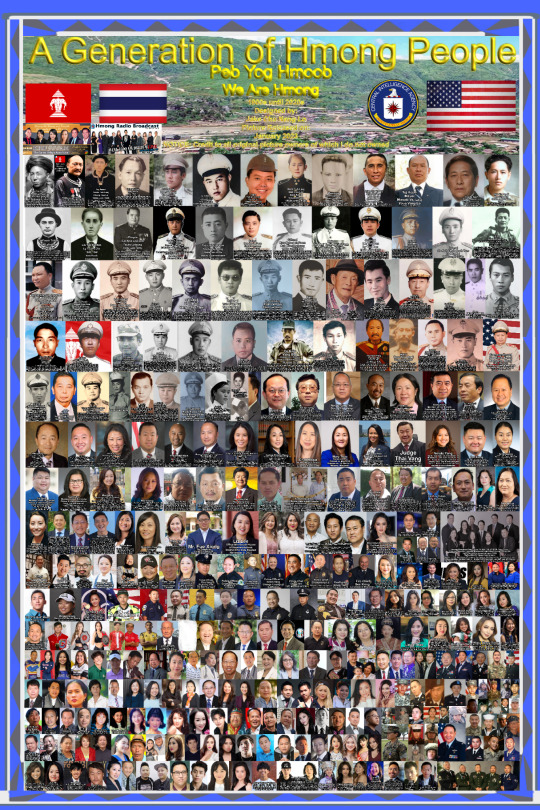
A Generation of Hmong People 2024 (Postponed)
#vietnamwar#hmoob#hmong#Minnesota#Wisconsin#California#Thailand#war#leaders#trending#trend#news#collage#collab#education#history#hmongpeople#wtf#famous hmong people#gran torino#sunisa lee#general vang pao#vaj pov#internet today#central valley#facts#real#Pic#peb yog hmoob#laos
1 note
·
View note
Text
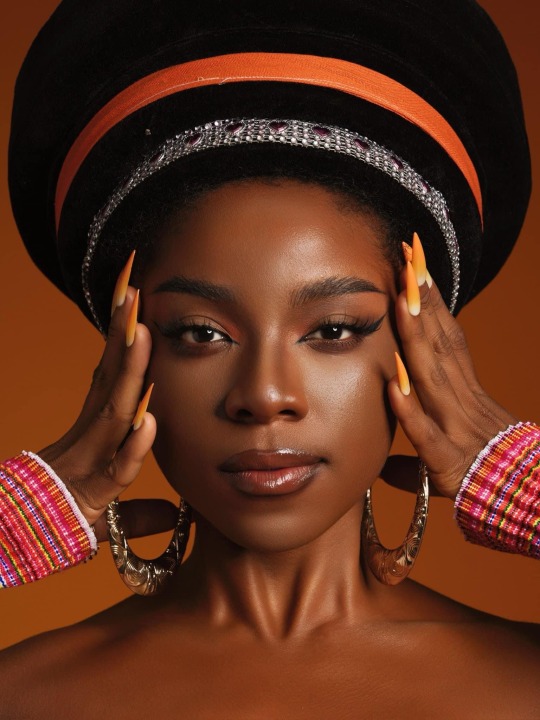
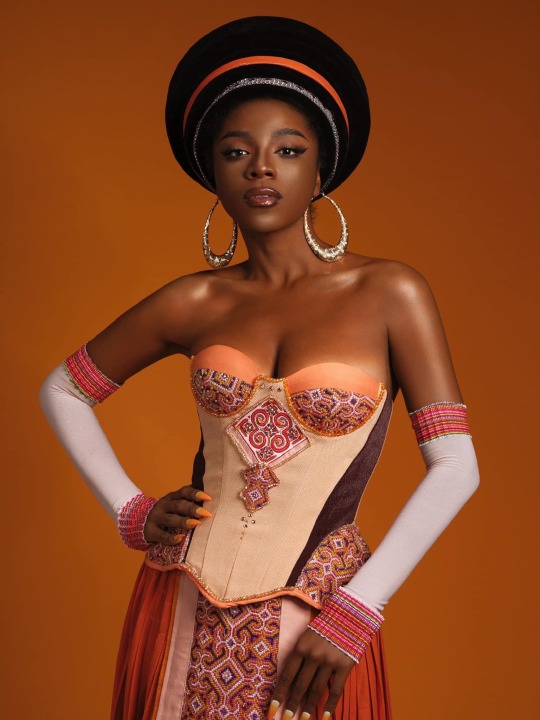
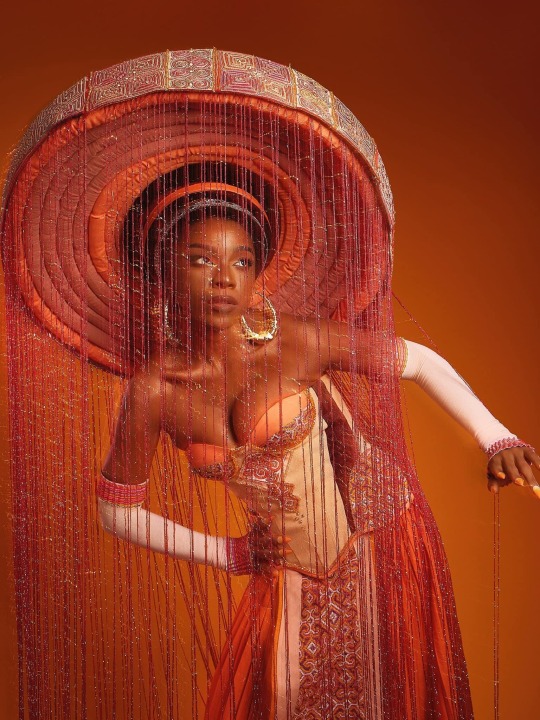
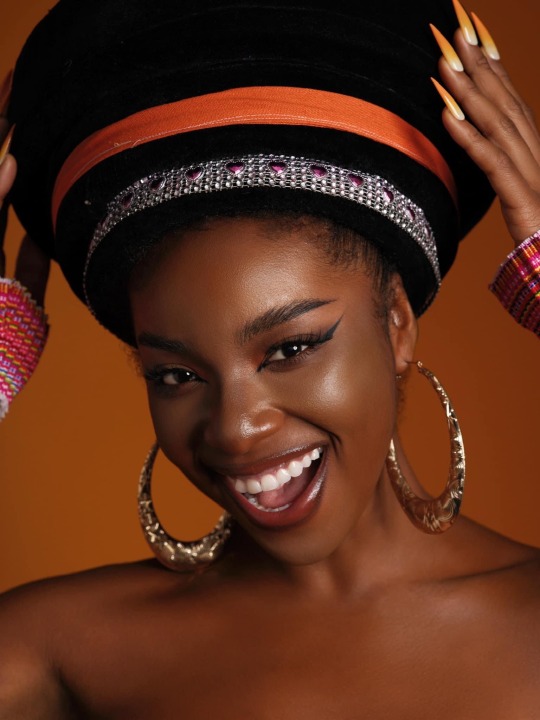
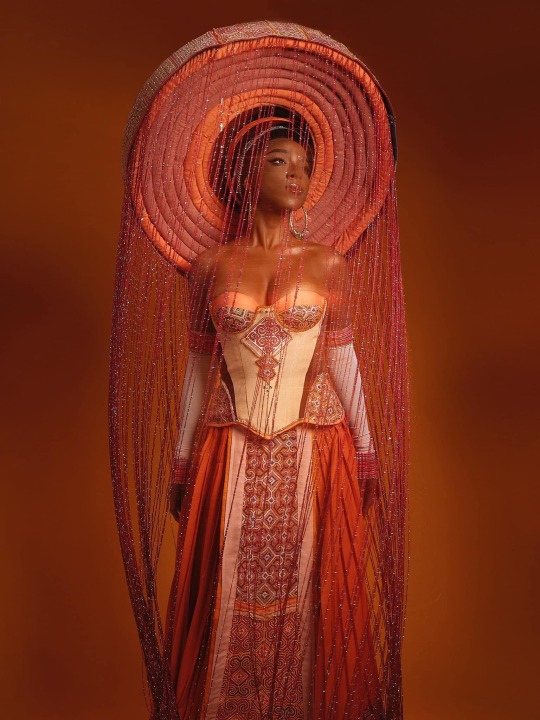
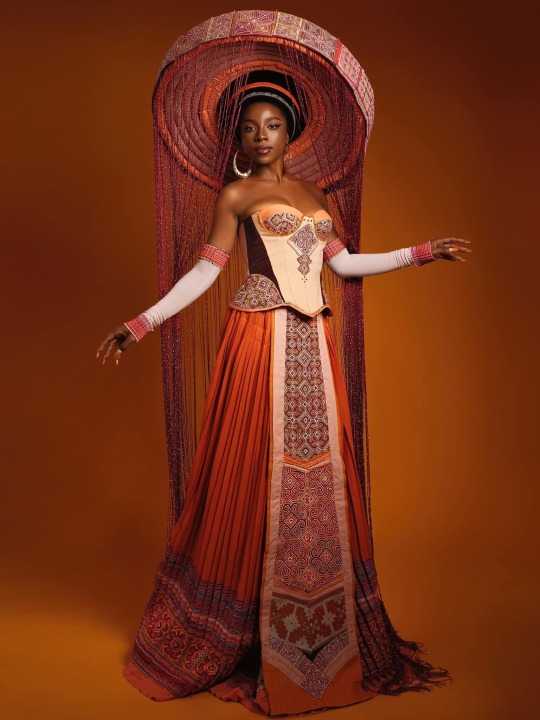
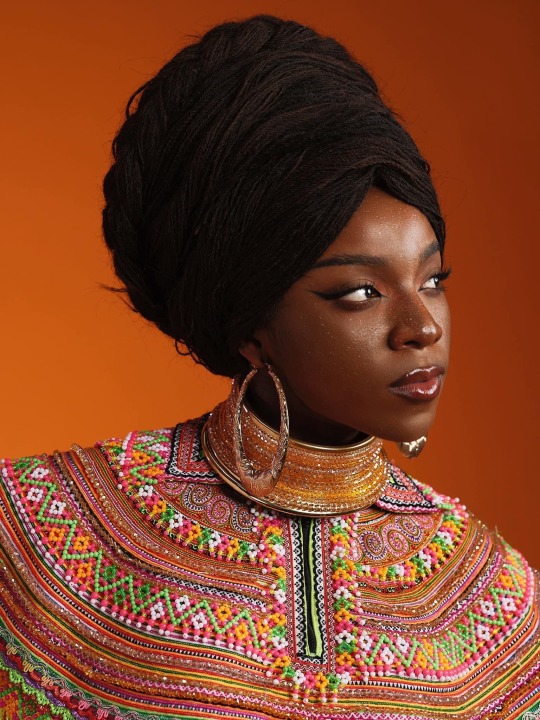
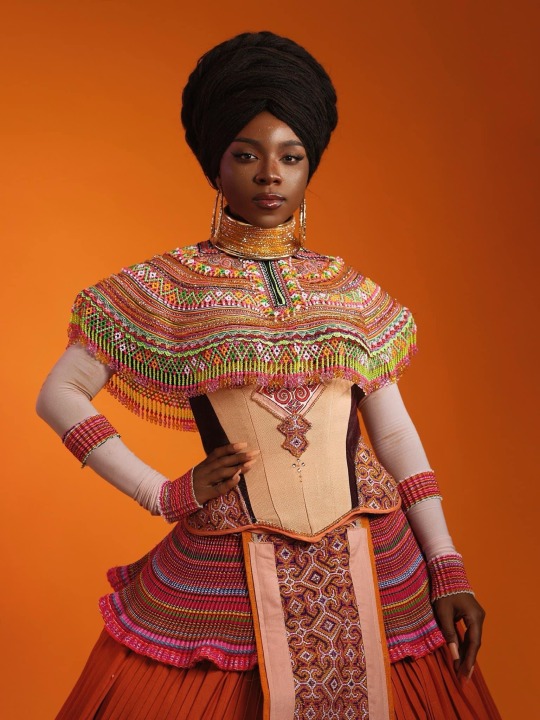
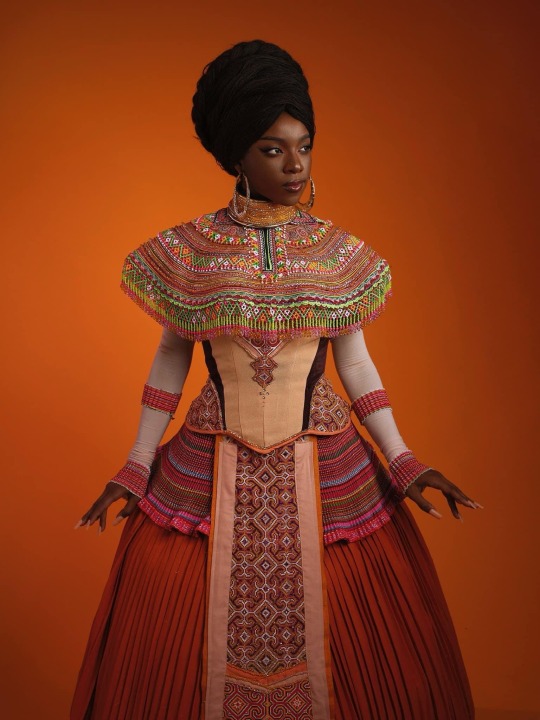
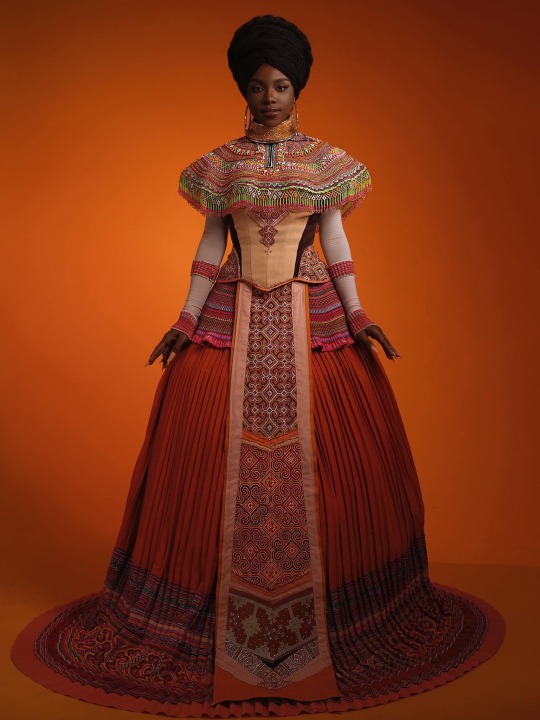
Fashion designs inspired by White & Flower Hmong traditional clothes. Credit to Hnubflower.
#vietnam#vietnamese#culture#history#fashion#hmong#blasian#ethnic fashion#ethnic minorities#ethnic groups#ethnicity#ethnicwear#ethnicfashion#ethnicchic#ethnicart#ethnicelegance#ethniccharm#ethnicjewelry
392 notes
·
View notes
Text
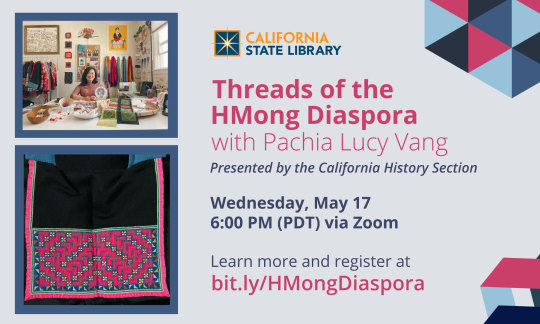
Join the California History Section on May 16 at 6:00 pm in a talk exploring the history of HMong Californians through the threads of their global diaspora. Tapping into oral history and folklore, designer and curator Pachia Lucy Vang shares research rooted in HMong knowledge to look at the importance of paj ntaub or HMong clothing and textiles throughout the world.
Learn more and register for this free online event here: https://libraryca.libcal.com/calendar/californiastatelibrary/HMongDiaspora
25 notes
·
View notes
Text
I find it really hard to get back into comics these days, DC specifically. I've tried, but there doesn't seem to be any internal consistency with stories and characters. It all seems to operate on a specific writer's whim to determine what in a character's history is canon/relevant at any given time, and character development or important events may be dropped without a word. Characters go through so many different writers that they may end up completely different than they were 5 years ago, or become flanderized version of themselves. Their histories might get erased, some parts of their histories might randomly come back, relationships they have with other characters might be forgotten about, etc.
DC seems to want to operate on the idea of "everything is canon", but that doesn't… really work, when there are direct contradictions to what's come before—things that couldn't be canon if other things are. And honestly, I don't enjoy that. I don't like the idea of all these stories happening in a vacuum, aand having to decide for myself what stories have or have not happened for each specific character I like (at least in official media, because that's what fan fic is for). I will always prefer fully developed narratives, and characters who are allowed to grow and evolve, and maintain internal consistency to their stories. I like beginnings, middles, and ends, not the constant state of stagnation these characters always seem to be in, because god forbid the status quo ever change.
As an example, my favorite DC character is/was Rose Wilson—but specifically from before Flashpoint and the New 52. Nowadays, even after Rebirth, she's just a different character to me. Most of what I loved about her has been written out or forgotten about, and I have tried to enjoy her for what she is now, but I haven't been as engaged by her stories or how she's been written. In my own opinion, most of what made her so compelling for me is gone, and with the exception of a couple standout moments here and there, she's been mostly a nerfed caricature of herself. Her backstory has been changed, her ethnicity was changed (from Khmer to Hmong), her dynamic with her family has changed, she no longer has the same relationships with so many characters, and even if you want to say "everything in her past and all her stories still happened", there are direct contradictions now that prevent that from making sense.
I have had to come to accept that, while I find the present-day Rose "okay"—not great, not bad, just okay—the character I fell in love with and who became my favorite of all time ended in 2011 when DC decided to reboot things. And that makes me a little sad.
This is, of course, only my own opinion. I will never knock on others for enjoying these comics or these characters how they are, and if you do I'm happy for you! I wish I could too, but unfortunately it's just not for me anymore. I have since taken solace in fan works and my own writing, where I can get that kind of concrete development and narrative consistency, and that's okay with me.
#dcu#dc comics#rose wilson#maybe I'm just old and jaded lol#seriously though#if you still love how comics are going and these characters#then right on!#and even though Rebirth Rose isn't my favorite anymore#I do still keep up with her now and then#and I would absolutely read an ongoing if DC ever gave her one#also give her a girlfriend DC#you cowards
5 notes
·
View notes